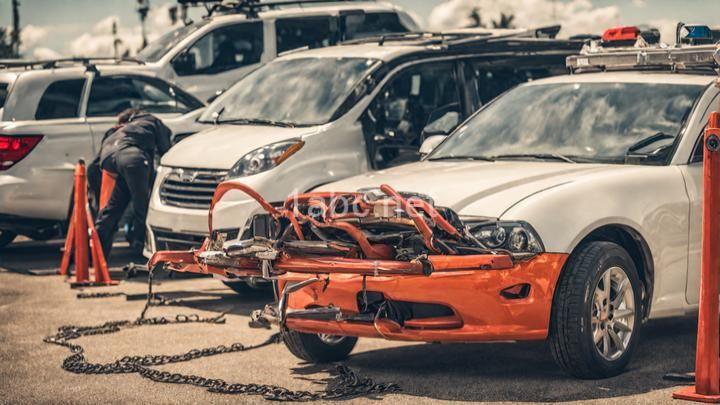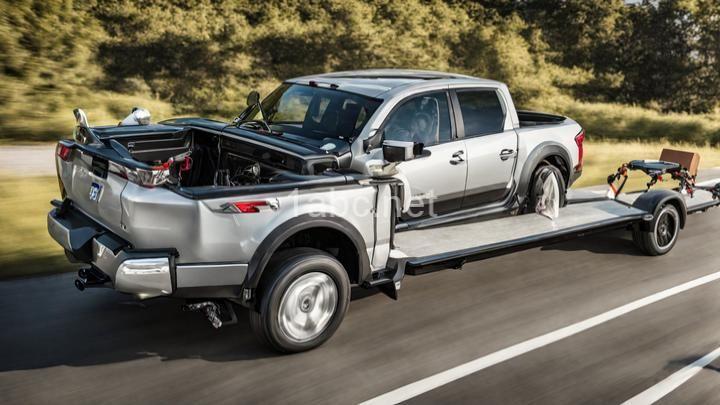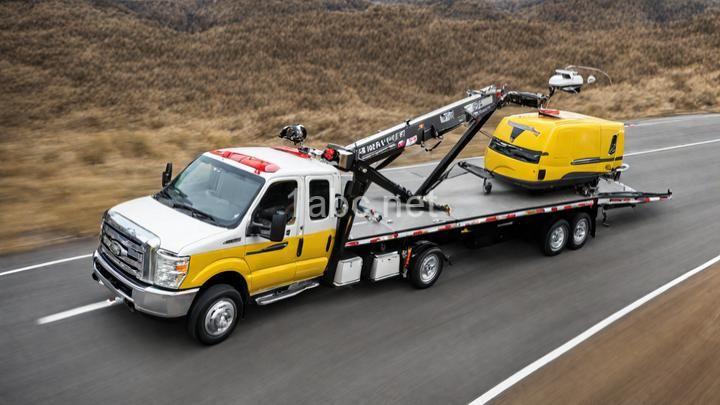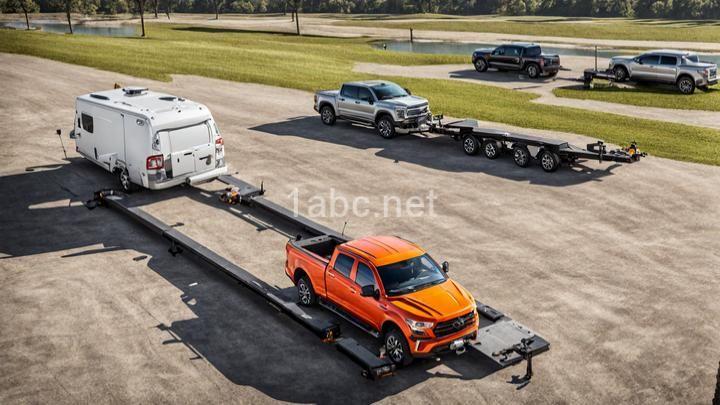Top 5 Tools and Equipment for Securing Vehicles during Towing

Introduction:
Towing a vehicle can be a challenging task, requiring careful planning and attention to detail. One of the most crucial aspects of towing is ensuring that the towed vehicle is securely attached to the towing vehicle. This is where the use of proper tools and equipment becomes essential. In this blog post, we will discuss the top 5 tools and equipment for securing vehicles during towing.
I. Tow Straps:
Tow straps are a vital tool for securely attaching the towed vehicle to the towing vehicle. These straps are typically made from either nylon or polyester, each offering unique benefits. Nylon straps are known for their high strength and stretchability, making them ideal for heavy-duty towing. On the other hand, polyester straps are less stretchable but offer excellent resistance to UV rays and chemicals.
Choosing the right tow strap is crucial for a safe towing experience. It is essential to consider the weight capacity of the strap and ensure it can handle the weight of the towed vehicle. Additionally, the material strength of the strap should be carefully evaluated to ensure it can withstand the forces exerted during towing.
II. D-Rings/Shackles:
D-Rings or shackles are another essential tool for securing vehicles during towing. These sturdy metal loops serve as attachment points for tow straps. When choosing D-rings or shackles, it is crucial to opt for high-quality ones that have a high working load limit. This ensures that they can handle the forces exerted during towing without compromising safety.
The size and material of D-rings or shackles should also be considered. It is recommended to choose D-rings or shackles that are appropriately sized for the tow strap and have a robust construction. Stainless steel or alloy steel D-rings and shackles are often preferred due to their strength and durability.
III. Safety Chains:
Safety chains play a vital role in keeping the towed vehicle securely connected to the towing vehicle. In the event of an unexpected detachment, safety chains act as a backup, preventing the towed vehicle from completely separating from the towing vehicle.
Proper attachment of safety chains is crucial for their effectiveness. They should be securely hooked or connected to both vehicles, creating a crisscross pattern to minimize the risk of detachment. It is essential to regularly inspect safety chains for any signs of wear or damage and replace them if necessary.
IV. Wheel Chocks:
Wheel chocks are an essential tool for preventing unintended movement of the towed vehicle during towing operations. These wedge-shaped blocks are placed against the wheels of the towed vehicle, providing stability and preventing it from rolling or shifting.
There are different types of wheel chocks available, including rubber and metal chocks. Rubber chocks are lightweight, easy to handle, and provide excellent grip on various surfaces. Metal chocks, on the other hand, offer exceptional durability and strength. It is important to properly place wheel chocks to ensure maximum stability and minimize the risk of the towed vehicle moving.
V. Trailer Hitch Locks:
Trailer hitch locks are an excellent tool for deterring theft or unauthorized access to the towing receiver hitch. These locks are designed to secure the connection between the towing vehicle and the trailer, preventing anyone from disconnecting the two without authorization.
Different types of trailer hitch locks are available, including coupler locks and pin locks. Coupler locks fit over the trailer's coupler, preventing it from being attached to another hitch. Pin locks, on the other hand, secure the hitch pin, preventing anyone from removing it. When choosing a trailer hitch lock, it is important to consider the type of towing hitch and trailer to ensure compatibility.
Conclusion:
Securing vehicles during towing is a crucial aspect of ensuring a safe and hassle-free towing experience. By using the top 5 tools and equipment discussed in this blog post, you can significantly enhance the security and stability of your towing operations. Tow straps, D-rings/shackles, safety chains, wheel chocks, and trailer hitch locks are all essential tools that play a vital role in securing vehicles during towing.
Investing in high-quality tools and equipment is highly recommended to ensure the safety of both the towing vehicle and the towed vehicle. Remember to always follow proper towing procedures and consult professional advice when needed. By prioritizing the use of proper tools and equipment, you can enjoy a safe and secure towing experience.
FREQUENTLY ASKED QUESTIONS
What are the top 5 tools and equipment for securing vehicles during towing?
The top 5 tools and equipment for securing vehicles during towing are:
- Tow Straps: These heavy-duty straps are essential for securely attaching the towed vehicle to the towing vehicle. They are designed to handle the weight and force exerted during towing.
- Hitch Receiver and Ball Mount: A hitch receiver provides a sturdy connection point between the towing vehicle and the towed vehicle. The ball mount is inserted into the receiver and allows for secure attachment of the tow ball.
- Safety Chains: Safety chains act as a backup in case the main attachment fails. They are crossed beneath the towed vehicle's coupler and connected to the towing vehicle. Safety chains are crucial for preventing total detachment in the event of an accident or equipment failure.
- Brake Controller: If the towed vehicle has its own brakes, a brake controller is necessary for synchronizing the braking systems of both vehicles. This ensures safe and controlled braking while towing.
- Towing Mirrors: Wide-angle or extended towing mirrors are important for increased visibility while towing. They provide a clear view of the towed vehicle, helping the driver maintain the desired path and address any issues during the towing process.
These tools and equipment are vital for ensuring the safe and secure transportation of vehicles during towing operations.
How do these tools and equipment help in securing vehicles during towing?
There are several tools and equipment that are essential for securing vehicles during towing. Here are some of them:
- Tow Straps or Chains: These heavy-duty straps or chains are used to connect the towing vehicle to the vehicle being towed. They provide a strong and secure attachment point.
- D-Rings or Shackles: These are strong metal rings or shackles that are used to connect the tow straps or chains to the vehicles. They provide a safe and reliable point for attachment.
- Wheel Lifts or Dollies: These are special devices that attach to the wheels of the towed vehicle to lift it off the ground. They allow the vehicle to be towed without putting any stress on the suspension or transmission.
- Trailer Hitch: A trailer hitch is used to connect the towed vehicle to the towing vehicle. It provides a secure attachment point and allows for safe and smooth towing.
- Safety Chains: Safety chains are backup attachments that provide an additional level of security. They are attached to the towing vehicle and the towed vehicle to prevent detachment in case the primary attachment fails.
- Winches: Winches are used to pull vehicles onto the tow truck or trailer. They provide a powerful and controlled pulling force, especially in situations where the towed vehicle cannot be driven onto the truck.
- Towing Lights: Towing lights are essential for ensuring that other drivers can see the towed vehicle on the road. They include brake lights, turn signals, and taillights, which need to be synchronized with the towing vehicle.
All of these tools and equipment work together to ensure that the vehicle being towed is secured properly and can be transported safely without any damage or accidents.
Are these tools and equipment suitable for all types of vehicles?
The suitability of tools and equipment for different types of vehicles depends on their specific design and intended use. Some tools and equipment may be versatile and compatible with a wide range of vehicles, while others may be designed for specific types or models. It is important to refer to the product specifications or consult with the manufacturer to determine if certain tools or equipment are suitable for your specific vehicle.
Can these tools and equipment be used by individuals without professional towing experience?
Yes, most of these tools and equipment can be used by individuals without professional towing experience. However, it is important to note that towing can be a complex and potentially dangerous task, so it is always recommended to have some level of knowledge and understanding of proper towing procedures. Additionally, it is advisable to consult the owner's manual for your specific vehicle and equipment, and if unsure, seek assistance from a professional or experienced tow operator. Safety should always be the top priority when towing any vehicle or trailer.



